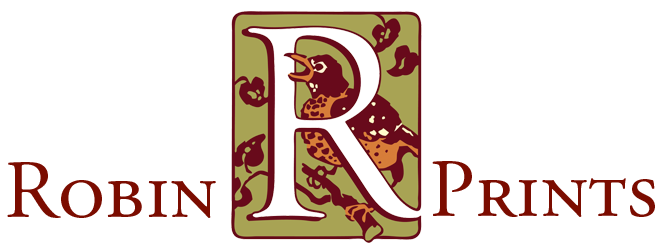Relief printing is familiar in concept to most people. If you have ever made a linoleum print or even a potato print, you were doing relief printing. In this method, areas not meant to print are cut away, and the remaining surface is rolled with ink. That ink can be transferred to paper with a mechanical press, or by placing paper over the carved block, and rubbing the back of the paper with a spoon. Separate blocks are often used to make prints with multiple colors.
The relief methods you’ll see most on this website are:
Woodcut Planks (side-grain) of cherry, pear, apple, maple or other woods are carved with gouges and knives. Woodcut imagery tends to be bold and direct.
Wood Engraving Traditionally made on the end-grain of boxwood. This surface and material are quite dense and even, allowing for extremely fine detail. Instead of carving the surface with knives and gouges, the artist pushes burins and gravers. Wood engraving is similar to metal engraving only because of the similar tools employed for cutting. The printing methods, however, are very different. (See Intaglio Methods for more about metal engraving.)
Linocut Linoleum is a synthetic flooring material made from cork and linseed oil, and artists have long used it for printmaking. Linoleum cuts more smoothly and easily than wood, and linocuts typically show more fluid edges than woodcuts.
